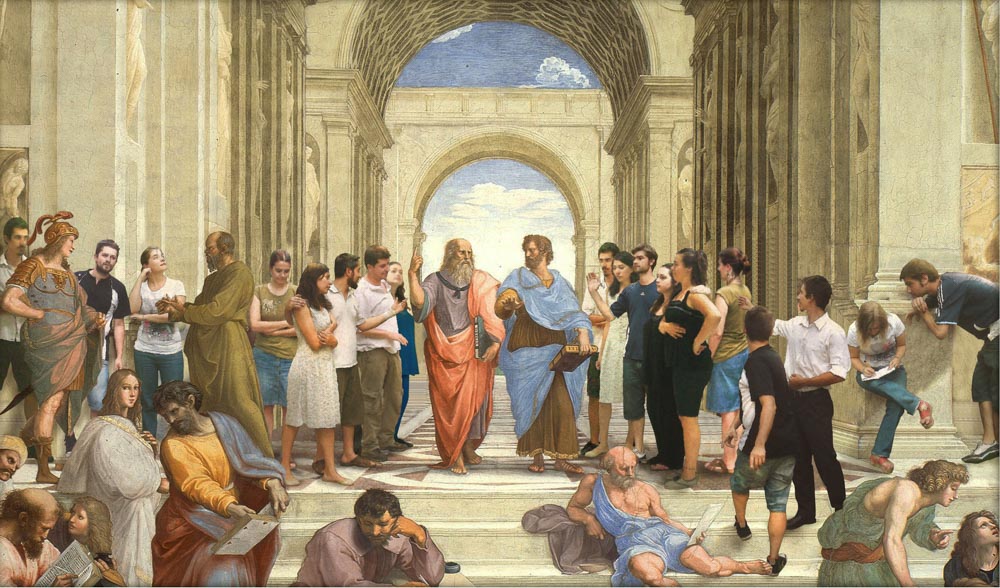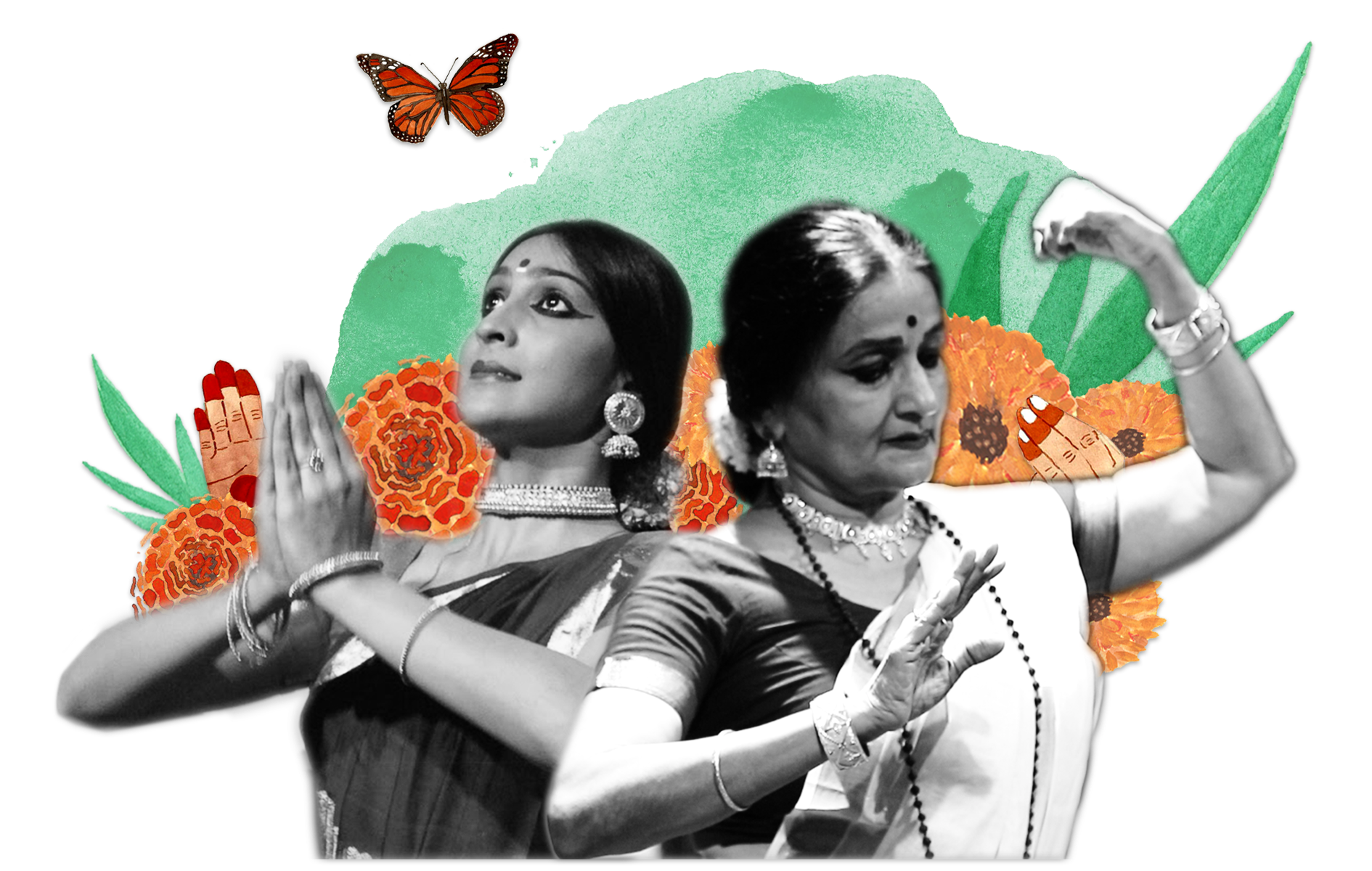Empowering Real Change: Philosophy & Art Panel Discussion on World Philosophy Day 2017
Article By Compiled by Harianto H Mehta
 For New Acropolis members across the globe, every day in a way, is World Philosophy Day. Through history, classical traditions have employed philosophy as the central axis of education, recognizing the pivotal role of wisdom and ethics, in the formation of human civilization. Therefore, we mark the special opportunity of UNESCO’s annual endorsement of World Philosophy Day to further emphasize the value of Philosophy, as a practical tool by which to improve our lives. Philosophy, which literally means ‘love of wisdom’, goes beyond the leaves of a book or the realm of intellectual debate. It can penetrate, and impact, every aspect of our life; it can be breathed, and practiced, and lived in every moment, every day. UNESCO recognizes the need of “raising public awareness of the importance of philosophy and its critical use in the choices arising for many societies from the effects of globalization or entry into modernity.” (http://www.un.org/en/events/philosophyday/) If done correctly, Philosophy has the potential to catalyze the change that so many today see as imperative for the sustainability of human civilization.
For New Acropolis members across the globe, every day in a way, is World Philosophy Day. Through history, classical traditions have employed philosophy as the central axis of education, recognizing the pivotal role of wisdom and ethics, in the formation of human civilization. Therefore, we mark the special opportunity of UNESCO’s annual endorsement of World Philosophy Day to further emphasize the value of Philosophy, as a practical tool by which to improve our lives. Philosophy, which literally means ‘love of wisdom’, goes beyond the leaves of a book or the realm of intellectual debate. It can penetrate, and impact, every aspect of our life; it can be breathed, and practiced, and lived in every moment, every day. UNESCO recognizes the need of “raising public awareness of the importance of philosophy and its critical use in the choices arising for many societies from the effects of globalization or entry into modernity.” (http://www.un.org/en/events/philosophyday/) If done correctly, Philosophy has the potential to catalyze the change that so many today see as imperative for the sustainability of human civilization.
To mark the occasion this year, on 16th November 2017, under the leadership of Yaron Barzilay (National Director), New Acropolis Cultural Organization moderated an inspiring panel discussion entitled “Empowering Real Change: Philosophy & Art”, to a full house at the prestigious National Gallery of Modern Art (Mumbai). While I know I will not do justice with everything that each of the panelists shared, compiled herein is my attempt to capture and summarize the principle themes encountered during the delightful evening.
Philosophy. Art. Change. The connection between these seemingly disconnected topics was woven together into a meaningful synergy by panellists comprising Shabnam Virmani (Singer & Filmmaker, Founder of The Kabir Project), Miti Desai (Classical Mohiniattam Dancer and Creative Head of Miti Design Lab) and Philosopher-Photographer Pierre Poulain (International Organization New Acropolis, Regional Coordinator). Each panellist’s personal journey revealed the intrinsic relationship between Philosophy and Art as an instrument of transformation, the source of meaning, and an engine for self-discovery.
In order to begin this investigation Yaron questioned whether it is even possible to live Philosophy without Art, or vice-versa? He observed that it is the aspiration for Beauty that drives Art and proposes that Wisdom and Beauty are indeed two sides of the same coin. But also, that true Art cannot lack meaning, an investigative philosophical search for harmony and aesthetics; the formal creative is but an expression of this mysterious search into the invisible world of archetypes.
Today, the need for change is so palpable that it sometimes expresses even as despair. Many seek real change, not just cosmetic fixes which only make us “feel good”. Instead, we seek change that is sustainable and moving in the right direction. Hence, while it is evident that there is a definite relationship between Philosophy and Art, the question still remains: can it transform our lives? Through it, might we discover a path to reveal the best of our human potential? Yaron explains that a path leading to wisdom must necessarily bring about change. “Philosophy,” he says, “is itself a dynamic art, an art of living, a constant search for harmony between seemingly contradictory aspects of our lives, through simplicity, greater depth, and unity – and this demands change.” Philosophy and Art offer us role models, archetypes, an Ideal to follow in a world that condones “fake news” and “post-truth”, which is not driven by a search for truth, is therefore disconnected from objective reality, and is consequently moving towards increasing disharmony.
Music: Shabnam Virmani (The Kabir Project, Founder)
Born and nurtured in an environment that staunchly fostered secularism and rationalism, Shabnam found her own paradigm based on rational knowledge and certitude challenged as she encountered the domains of faith, art, and philosophy through her journey.
She recalls her work as a social activist in the aftermath of the Godhra riots in Gujarat (India), trying to dispel stereotypes and change the misperceptions that communities had of each other, which were fuelling divides and instilling suspicion. Among her many projects, she produced and distributed pamphlets documenting research and statistics, and she says, “We really believed in that project of blowing these myths by providing data and research,” with the goal to educate and alleviate ungrounded communal fears. But to her surprise, she found that the data simply did not percolate; there was always contrarian data available and it therefore made no difference to peoples’ opinions and prejudices. She realized that “change happens not through facts and statistics…if we are to rely entirely on intellectual discourse to shift peoples’ way of being, and acting and thinking…then we are on a failed project.”
Instead, she would discover that the true story of change, of transformation, one that would truly move human society, lies in the realm of an akhat katha, as Kabir might call it, a tale that cannot be told because it transcends the intellect, penetrates and moves one from within, dissolving illusive boundaries. On a slow train journey through the Indian countryside, in harmony with the tinkling of cattle bells across the fields, she experienced this piercing shift suddenly and inexplicably, as a blind singer sung a few lines of a beautiful old Bollywood classic. Such is the domain of art and poetry and music, which she describes, again in the words of Kabir, as having the power of shabd ki chot, inflicting a lasting wound that triggers a shift, an inner change that cannot be described.
This prompted her exploration of the grander cultural spiritual symbolisms and archetypes, through Kabir and through music. She says, “My journey moved me to a place of wonder and delighted mystery. From a place of anxiously seeking to define my identity in dualities, defined by pro-this or anti-that, to a place of joy of not knowing…of collapsing those dualities, in perceiving oneself, and the world. To perceive the world not as us and them, but as a play of endless reversals. It moved me from a place of rights and choices and control, to a place of surrender, a faith in something that one might call a higher intelligence…It moved me away from looking outside for problems and trying to fix them, to looking within…to see how the fissures and the lack of peace within manifests in the world as war. And that this inner and outer are connected.”
Photography: Pierre Poulain (International Organization New Acropolis, Regional Coordinator)
“The greatest art in my understanding is the art of living. This is the most difficult one, but it is the most wonderful one,” says Philosopher-Photographer Pierre Poulain, revealing his take on the true meaning of Philosophy. For Pierre, Philosophy entails a search for universal wisdom through the discovery of the meaning of life, to align to her natural harmony. Humbly, he explains that the ultimate Meaning lies in the realm of perfection, from which we are still very far. More achievable, however, is to set off to approach that state of perfection, and take steps in that direction. And the direct complement of this approach is that “you must also offer it forward, you have to give it back. And here lies the true function of Art…to offer something far beyond your subjectivity…” The true artist looks for the best way in which to use his tools – the personality, the physical body, the emotions and intellect – not as a means of self-expression, but to emanate and transmit meaning, the universal light, wisdom. Therefore art can never be subjective or personal.
Pierre observes that the underlying force that drives Philosophy is Love, as a precondition. “When you love something or somebody, it’s not enough to know that you love it. You need to experience it!” This echoes the age-old traditional saying that “To follow a path, you have to become that path.” You have to experience it as your own reality. You have to be in love with it, with Life, with the Universe. And this force of love will enable us to get closer and closer to our svadharma, our purpose…and fuel the change from “Who am I?” to “Who can I be?”
Traditions across the globe speak of the human being as a complex entity comprising a tangible but transient and subjective self, the personality, which shall one day die, and is therefore often described as illusion, maya. But there is another aspect, the eternal higher self, the consciousness, capable of objective discernment and intuition, our true being. Pierre describes that this change of identity, from the transient to the eternal, from the subjective to the objective, is to make life meaningful.
Interestingly, Pierre implements this aspiration through street photography. He says, “The more time passes, the fewer pictures I take…fewer pictures, but better pictures. This is because if a picture doesn’t have a real meaning, it is not worth anything. But can I be the authority to recognize the meaning? No! This is because I will recognize it only through my intellect, my own subjectivity. Instead, as I walk through a street, I must take photos without the intellectual process of recognizing. And it really is like that. Something occurs…and ‘tuk’ – I take the picture. Only afterwards do I actually observe the photograph, and question what compelled me to click; was there a form, an energy, a light, a contrast, a paradox? – something that called me…[But for this] I have to be transparent. Usually when this occurs, the picture is a good picture, at least good enough…” Hence he says, “there is no such thing as my art, just like we cannot say my wisdom.” Any artist is just a medium, through which wisdom or beauty can express.
So is photography then a simple result of luck? Recalling an interview of celebrated French photographer Henry Cartier-Bresson, Pierre shares that it is always a matter of luck. But what is important is that we have to learn how to be lucky. “You have in life a lot of opportunities. It is incredible! All the time! But we don’t pay attention. Luck is to learn to pay attention and seize the opportunities you have in life…luck is when you become a disciple of life…”
Dance: Miti Desai (Miti Design Lab, Creative Head)
A graphic designer by profession and a Mohiniattam dancer by passion, Miti Desai contemplates: “I don’t know if I’m any philosopher, I don’t know if I’m any artist. But I do feel that I’m a seeker and it is with this intense feeling, this inner urge of seeking, that my journey really began.”
After completing a 5 year undergraduate degree in Applied Art, she vividly recollects the “intense discomfort” that developed upon receiving her first assignment, on her first day, at her first job, when she realized the fundamental financial transaction that lay at the foundation of what she was assigned to create. She decided that it was not how she wanted to live her life, and was certain that she sought something beyond the mundane, “beyond what is told as what you’re supposed to do.”
Feeling deeply about the concept of design, she says, “I wanted to experience design holistically…I wanted to design with my body, I wanted to design with my soul, and with every part of my being, I wanted to understand my design.” Her realization naturally led her to dance through which she found a way to bridge between external expression and internal experience.
She explains that to her, classical Indian dance, both in form, but also in the approach through which it was imparted, opened “a whole world view of design of being…which lends itself to transcendence, which at every point reveals that the purpose of this life is to grow, to transcend, to dive into a higher dimension or an inner dimension.” Because ultimately, all classical Indian art forms praise the gods and goddesses, which are symbols, cosmic principles. In doing so, each art form becomes a ladder by which the artist may grasp the archetypes and emulate them in life; to release oneself from psychological bondages in order to elevate consciousness to the state of Shiva, the divine.
Miti concluded that this is what she had been seeking: the means of creative expression as a pathway by which to live and experience. “From the formless comes the form, and the form takes you back to the formless.”
Each of these artistic journeys sheds light on the astounding relationship between Philosophy and Art. Each is an inspiration that demonstrates the role of Art, whether Music, Photography or Dance, as a genuine means of philosophical investigation that might empower real change. Each voyage reveals the underlying premise that motivates the true artist; the daring adventure to unlock the human potential. Perhaps through art we might once again inspire a renewal, a rebirth; a renaissance of Human Consciousness.
The entity posting this article assumes the responsibility that images used in this article have the requisite permissionsImage References
Image : Courtesy New Acropolis India North
Permissions required for the publishing of this article have been obtained




What do you think?